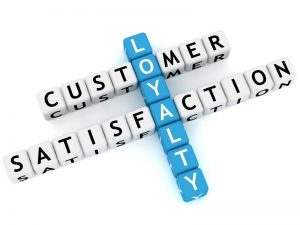Deals don't always come to a happy end, and that is often a result of poor customer experience. It costs billions to companies, and what is worse, the customer might go with another supplier not only this time but also next time. How then, do you create a customer experience that is so good that the customer stays?
I recently read a study by Forbes Insights, “Data Elevates the Customer Experience,” and the conclusion was that it’s the data-driven organizations that succeed best in creating good customer experiences. Data – especially high-quality data – lets you create a great customer experience by helping you quickly make the right decisions.
Customers today are peppered by various impressions from a variety of channels such as Facebook and other social media, blogs, magazines and TV, but also content marketing and other online and offline direct marketing activities. On top of this, there’s the information that the consumer seeks via search engines.
Getting attention and driving action
For a supplier, having the time to capture an individual customer in this hurricane of media impulses is a real challenge. Even just making the decision about whether to push a customer over the edge to purchase an item or a service, or to “let go” of that customer because the business isn’t good, is of course very difficult. That is the reason behind the huge interest in using data-driven systems based in thorough analysis – they help companies make better decisions faster and create a better customer experience.
What do customers want from their suppliers? The interesting thing is that it is remarkably similar to what the companies want. Just like the companies/suppliers, the customers want clarity. That is to say, the customer wants the supplier to have an accurate and complete picture of his or her wants and needs, and the company wants greater insight of its customers.
Three factors that make a good customer experience
So how can this be achieved? Of course this is related to how advanced the company is with regard to its technology. But there are also some non-technical aspects that must be fulfilled in order to succeed. The study I mention above contains three different factors that determine how advanced an organization is regarding data-driven customer experience.
Thorough understanding within the organization
A great customer experience doesn’t just pop up out of nowhere. It requires a good mix of different strategies, competencies and technical solutions. It applies to the full spectrum from data integration to implementation of new technology and to development of new processes. The organization must recognize the importance of analysis on an overall corporate level to be able to support the efforts in developing local programs or activities in the best way. By creating a successful data-driven customer experience, the organization itself will also have a positive experience.
Openness
It is a challenge to implement integrated systems that can be used in real time in all channels and straight through all operations in the entire organization. Information is often handled centrally and is not organized in a cross-functional and synchronized way. By opening up data sources and sharing data with each customer, it is possible to create a better customer experience. One example of this is the opportunity to show very specific offers to a customer in real time, when that specific customer is visiting a site and might want to buy something, or to get help with something. Another example is the opportunity to show an order and delivery time in direct correlation to a purchase situation so that the customer can be encouraged to make a purchase right away.
Execution
Good customer experiences are not created automatically by systems and technologies. You need people who create these systems and who choose the technology that is going to be used, in order to put in place processes that actually give results. It is important to link internal systems with those that the customer encounters, through a number of different channels and interfaces, and the data must be delivered in real time.
What is your data-driven customer experience strategy?
The data-driven customer experience provides many advantages, of which one of the most important is the opportunity to tailor the customer experience for an individual customer – straight through all the channels that the customer uses. If this is done right, the data-driven component will support sales and help improve company margins, but it may just as well be used to reduce risk and optimize resources. But without a data-driven strategy it can be hard to achieve an effect at both ends of the equation – in terms of both income and costs.


